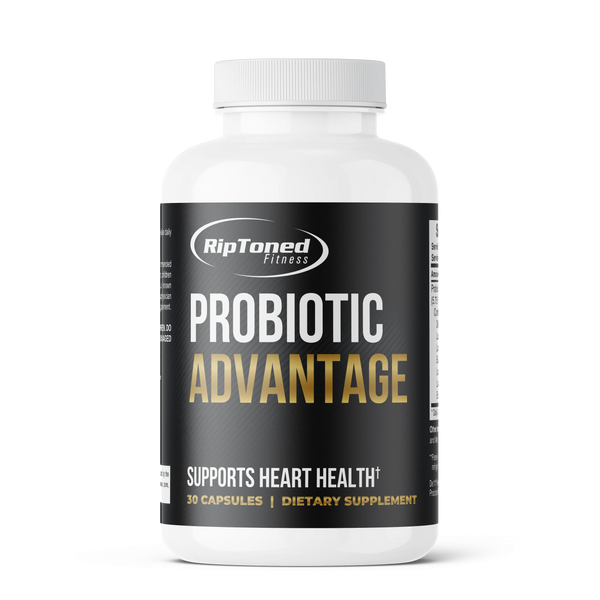
How Many Calories Burn In Weightlifting
Mark PasayShare
Weightlifting is a popular exercise that involves lifting weights to build strength, endurance, and muscle mass.
It is often associated with bodybuilding and powerlifting but can benefit anyone looking to improve their fitness. While weightlifting can have numerous benefits for the body, many people wonder how many calories they are burning during their workouts.
In this article, we will explore the number of calories that can be burned in weightlifting and factors that may affect calorie burn. We will also discuss tips for maximizing calorie burn in weightlifting workouts and the potential long-term effects on metabolism.
What is Weightlifting?
Weightlifting, also known as resistance or strength training, involves using external weights such as dumbbells, barbells, and machines to build muscle and improve overall fitness. It typically involves performing a variety of exercises that target different muscle groups in the body.
There are two main types of weightlifting: compound exercises and isolation exercises. Compound exercises involve working multiple muscle groups at once, while isolation exercises focus on specific muscles. Both types have benefits and can be incorporated into a weightlifting routine depending on one's goals.
Weightlifting is not only limited to traditional methods with weights, but it can also include bodyweight exercises such as push-ups, pull-ups, and squats. These exercises can also be considered weightlifting as they involve resistance against the body's weight.
Factors Affecting Calorie Burn in Weightlifting
The number of calories burned during weightlifting can vary based on several factors. These include:
Body weight
Body weight plays a significant role in determining the number of calories burned during weightlifting sessions. Generally, individuals with a higher body weight tend to burn more calories than those with a lower body weight, given the same intensity and duration of the exercise. This is because a heavier body requires more energy to move and lift weights. For example, a 200-pound person may burn more calories performing the same exercise as a 150-pound person due to the increased effort needed to move their body and weights simultaneously.
However, it is also essential to consider the composition of body weight, specifically lean muscle mass versus fat mass. Individuals with lean muscle tend to have a higher resting metabolic rate and can burn more calories even at rest.
Consequently, building muscle through weightlifting can further enhance calorie burn over time. Understanding how body weight influences calorie expenditure can help tailor weightlifting routines to maximize the benefits and achieve fitness goals more effectively.
Intensity of the workout
Intensity refers to the level of effort put into a workout. It is often measured by the amount of weight lifted and the number of repetitions and sets performed. Generally, the higher the intensity, the more calories are burned during a weightlifting session.
However, it is crucial to find a balance between intensity and safety when weightlifting. Pushing oneself too hard can lead to injury, while not pushing hard enough may result in lower calorie burn and reduced progress over time. Increasing intensity as strength and fitness improve can help optimize calorie burn and overall performance.
Plus, incorporating high-intensity interval training (HIIT) into weightlifting sessions can also lead to greater calorie burn. HIIT involves alternating between intense bursts of activity and short periods of rest, which can increase the overall intensity of a workout and boost metabolism.
Type of weightlifting exercises
The specific weightlifting exercises performed can also impact the number of calories burned. Compound exercises that target multiple muscle groups at once, such as squats, deadlifts, and bench presses, tend to burn more calories than isolation exercises.
Compound exercises require more energy and effort since they involve working multiple muscles simultaneously. Isolation exercises may still be beneficial for targeting specific muscles, but incorporating a mix of both compound and isolation exercises into a weightlifting routine can lead to optimal calorie burn.
Additionally, varying the types of weightlifting exercises can help prevent plateaus and keep the body challenged, leading to continued progress and increased calorie burn.
Rest periods between sets
Rest periods between sets can affect the number of calories burned during weightlifting. Longer rest periods give the body more time to recover, resulting in a lower overall calorie burn compared to shorter rest periods.
However, it is also essential to find an appropriate rest period that allows for adequate recovery and prevents overexertion. Resting too little can lead to decreased performance and potentially increase the risk of injury. As with intensity, gradually decreasing rest periods as strength and fitness improve can help maximize calorie burn and progress.
Muscle mass
Muscle mass plays a significant role in determining the number of calories burned during weightlifting. Muscles require energy to maintain, so individuals with a higher muscle mass tend to have a higher resting metabolic rate and burn more calories at rest.
Furthermore, building and maintaining muscle through weightlifting can lead to a long-term increase in metabolism. This is because muscles are metabolically active tissue, meaning they require more energy to function compared to fat tissue. As a result, individuals with more muscle mass may burn more calories even when performing daily activities.
Fitness level
An individual's fitness level can also impact the calories burned during weightlifting. Generally, individuals with a higher fitness level tend to have more endurance and can sustain longer, more intense workouts compared to those with a lower fitness level. This can result in higher calorie burn during weightlifting sessions.
However, it is essential to consider one's current fitness level when designing a weightlifting routine. Pushing oneself too hard at the beginning may lead to overexertion and an increased risk of injury. Gradually increasing the intensity and duration of workouts as fitness improves will ultimately lead to greater calorie burn.
Gender
Gender can also play a role in determining the number of calories burned during weightlifting. Generally, men tend to have more muscle mass and a higher resting metabolic rate compared to women, leading to higher calorie burn during weightlifting sessions.
However, this does not mean that women cannot achieve the same benefits from weightlifting. Women may have different fitness goals and need to adjust their routines accordingly. For example, some women may focus on building strength and muscle mass, while others may prioritize fat loss.
Related Products
Moreover, hormonal differences between men and women can also impact how the body responds to weightlifting. Understanding one's needs based on gender can help tailor a weightlifting routine for optimal results.
So, these are some additional factors to consider when designing a weightlifting routine for maximum calorie burn. By incorporating intensity, type of exercise, rest periods, muscle mass, fitness level, and gender into the equation, individuals can optimize their workouts and achieve their goals more effectively.
Average calorie burn
It is essential to remember that the number of calories burned during weightlifting varies from person to person. Along with the factors listed above, other individual characteristics such as age, height, and weight can also impact calorie burn.
Additionally, individuals may have different goals when it comes to weightlifting. Some may want to focus on building muscle mass, while others may prioritize fat loss. These goals can affect the intensity and duration of workouts, ultimately impacting overall calorie burn.
Furthermore, genetics can also play a role in how many calories an individual burns during weightlifting. Individuals with a higher natural metabolism may burn more calories during workouts compared to those with a lower metabolism.
Ultimately, it is essential to focus on individual progress and not compare calorie burn rates with others. As long as individuals are consistently challenging themselves and making progress toward their goals, they can achieve optimal results from weightlifting.
Should weightlifting be the sole form of exercise for calorie burn?
While weightlifting can be an effective way to burn calories, it should not be the only form of exercise in a well-rounded fitness routine. Incorporating other forms of physical activity, such as cardio and flexibility training, can provide additional health benefits and prevent boredom with repetitive workouts.
Cardio exercises like running, cycling, or swimming can elevate heart rate and increase calorie burn during the workout. They also have long-term effects on improving cardiovascular health and endurance.
Flexibility training through activities like yoga or stretching can improve muscle mobility and decrease the risk of injury during weightlifting. It can also complement weightlifting by improving range of motion and muscle recovery.
Additionally, incorporating other forms of physical activity can help prevent plateaus in progress and keep workouts varied and exciting. Ultimately, the key to optimal calorie burn and overall fitness is finding a balance between different exercises that work for each individual's needs and goals.
Are there any risks associated with weightlifting for calorie burn?
While weightlifting can be a safe and effective way to burn calories, it is essential to recognize and address potential risks. Overexertion can lead to injuries such as strains, sprains, or even more severe conditions like muscle tears.
It is crucial to listen to the body and not push beyond one's limits, especially when starting a new weightlifting routine. Proper form and technique are also crucial in preventing injury and maximizing the effectiveness of exercises.
Furthermore, individuals should consult a doctor before beginning a new workout regimen, especially if they have any pre-existing medical conditions or injuries.
Additionally, it is essential to warm up before weightlifting and include rest days in a routine. Not allowing the body enough time to recover can lead to burnout and an increased risk of injury.
FAQs
How many calories are burned during a typical weight-lifting session?
The number of calories burned lifting weights can vary widely depending on the intensity of the workout, the duration of the session, and the individual's body weight and muscle mass. On average, a person can burn between 200 to 400 calories in an hour of moderate weight lifting.
Can weight lifting help you lose weight as effectively as cardio workouts?
Weight lifting can help you lose weight, potentially as effectively as cardio workouts, by burning calories and increasing muscle mass. While cardio workouts might burn more calories during the session, weight lifting increases muscle mass, which boosts your metabolism and helps burn more calories even at rest.
How does increasing muscle mass through weight lifting affect calorie burning?
Increasing muscle mass through weight lifting enhances your resting metabolic rate, meaning you burn more calories even when not exercising. Muscle tissue requires more energy than body fat, so the more muscle mass you have, the more calories you'll burn throughout the day.
Is weight lifting or cardio more effective for reducing body fat?
Both weight lifting and cardio are effective for reducing body fat, but they do so in different ways. Cardio workouts tend to burn more calories in a single session, which can directly aid in fat loss. Weight lifting, however, builds muscle mass that increases your overall metabolic rate, helping you burn more calories in the long term. A combination of both may be the most effective strategy for fat loss.
Conclusion
In conclusion, weightlifting can be an effective way to burn calories and achieve fitness goals. However, it is essential to consider individual factors such as intensity, type of exercise, rest periods, muscle mass, fitness level, gender, and average calorie burn.
Moreover, incorporating a balanced fitness routine with other forms of physical activity can provide additional health benefits and prevent injury. It is also crucial to listen to the body and consult with a doctor before starting a new workout regimen.
By understanding these factors and taking necessary precautions, individuals can optimize their weightlifting routine for maximum calorie burn and overall fitness. So go ahead and hit the gym with this knowledge in mind, and watch your progress soar!
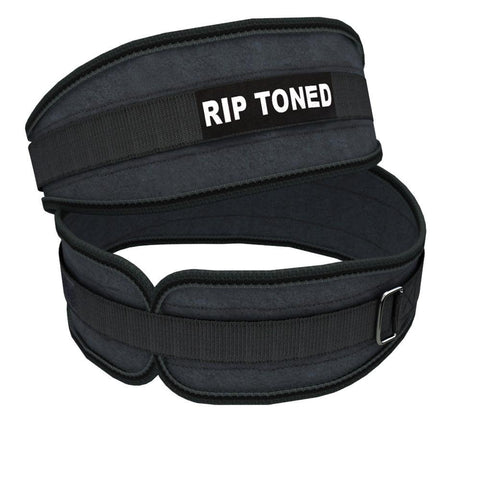
Related Posts
-
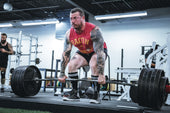
POWERLIFTING THE RIGHT WAY
-

Unlock Your Strength Potential: Conquer Weak Grip Strength Now
-

Bench Press to Success - Mastering your form
-

5 Tips for Women to Build Lean Muscle Tone in 2024
-

How to Get the Most Out of a Lifting Session
-

Working Out Under the Weather
-

The Lesser-known Benefits of Weightlifting
-

How Weight Training Supports Immune Health
-

The History of Weightlifting
-

Rest up to build up
-

4 Tips to Improve Lifting Gains The Right Way
-

4 Tips to Prevent Training Injuries
-

Top 3 Work Out Myths EXPOSED!!
-
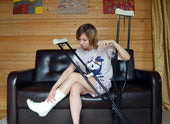
Common Lifting Injuries (And How to Avoid Them)
-

Hit the Gym or Stay at Home?
-

Weightlifting Benefits – Many Health Benefits for Men and Women
-

How Many Times a Week Should I Deadlift? A Guide to Deadlift Frequency and Programming
-

Can Deadlifts Hurt Your Back? Understanding Risks and Prevention
-

Why Does Whey Protein Make Me Sick
-

Can Protein Powder Upset Your Stomach
-

What To Mix Unflavored Protein Powder With
-

Crush Your PRs: The Gradual Strength Increase Guide for CrossFitters
-

Whey vs Collagen Protein: Which Is Best for You?
-

Can I Take Whey Protein Without Working Out? What You Need to Know
-

Why Does Whey Protein Hurt My Stomach: Causes and Solutions
-

Boost Your Run: Should You Take Pre-Workout Before Running?
-

Top Pre-Workout Benefits: Boost Energy and Enhance Performance
-

How Long Does Pre-Workout Take to Kick In? Find Out Here!
-

How Long Does Pre-Workout Last? Your Essential Guide
-

Does Pre-Workout Give You Pimples
-

How Long Does Pre-Workout Stay in Your System
-

When Should I Take Pre-Workout
-

Can I Mix Creatine With Pre-Workout
-

Long Term Side Effects of Pre-Workout Supplements
-

How Much Caffeine in Pre-Workout
-

Pre-Workout Alternatives
-

Does Pre-Workout Break a Fast
-

What to Eat Pre-Workout
-

What is In Pre-Workout
-

Advantages of Pre Workout Supplements
-

How To Get Rid Of Pre Workout Itch
-

How To Make Your Own Pre Workout
-

How Many Scoops Of Pre Workout Should I Take
-

How Bad Are Pre Workouts For You
-

How Long Before A Workout Should I Take Pre-Workout
-

How Much Caffeine Is In Bucked Up Pre Workout
-

How Long Does Pre Workout Increase Blood Pressure
-

What Does Pre Workout Do
-

Can I Use Sprite As Pre Workout
-

Can Supplements Boost Weightlifting Motivation
-

Why Do Weightlifters Wear Belts
-

Does Lifting Weights Cause Varicose Veins? What You Need to Know
-

Does Lifting Weights Affect Uterus Health? What Women Need to Know
-

How Lifting Weights Can Affect Your Sex Drive: Does Lifting Weights Make You Horny?
-

Why Don't I Sweat When I Lift Weights? Understanding the Causes
-

Why Are Physical Fitness Attitudes Important? Insights & Benefits
-

Why is Anytime Fitness So Expensive? Understanding Membership Costs
-

Substitute For Whey Protein Powder In Keto Baking
-

How Many Calories Does 1 Hour of Weightlifting Burn
-

A Guide To Cleaner Protein Supplementation
-

What Causes The Frothiness in Your Fitness Drink
-

How to Take Collagen Safely After a Gastric Bypass: Essential Tips
-

Why Do Protein Shakes Make Me Nauseous? Top Reasons and Solutions
-

Why Does My Stomach Hurt After Protein Shake? Understanding Your Digestive Discomfort
-

Can I Take Collagen After Gastric Bypass
-

Why Does My Protein Shake Foam
-

Best Belt for CrossFit: Complete Guide 2025
-

Rip Toned vs SBD Belts: Which Brand Offers Better Value and Performance?
-
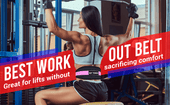
The Complete Guide to Women's Weightlifting Belts
-
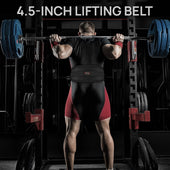
Should Beginners Use a Weightlifting Belt
-

10mm vs 13mm Belt Thickness: The Complete Guide
-

Prong Buckle vs Lever Buckle Belts: The Ultimate Comparison Guide
-
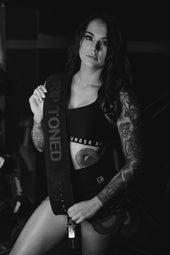
Powerlifting Belts vs Bodybuilding Belts
-

Weightlifting Straps vs. Lifting Hooks: Which is Better?
-

How to Treat Weightlifters Elbow
-

Should You Use Lifting Straps During Bicep Curls for Better Gains?
-

Weightlifting Straps vs. Bare Hands
-

Benefits of Using Weightlifting Straps in Training
-

Mistakes to Avoid When Using Weightlifting Straps
-

Wrist Wraps While Doing Curls
-

Should I Use Wrist Wraps for Bench Press
-

How to Clean Wrist Wraps
-

Are Wrist Wraps Necessary
-

The Ultimate Deadlift Guide: From Form to Performance
-

What Exercises to Use Wrist Wraps For?
-

Are Wrist Wraps Cheating on Bench?
-

Do Wrist Wraps Make You Stronger?
-

Do Wrist Wraps Help With Grip Strength
-

When to Start Using Wrist Wraps
-

Best Weightlifting Belts 2025: Ultimate Buyer's Guide
-

How to Measure for a Weightlifting Belt
-
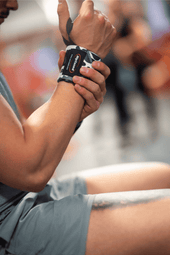
Can Wrist Wraps Boost Your Grip Strength in Weightlifting?
-

Should You Use Wrist Wraps for Bench Press and Overhead Press?
-

Do Wrist Wraps Help with Wrist Pain During Strength Training? Find Out Here
-

How Can Wrist Wraps Prevent Injury During Heavy Lifting?
-

How Do You Use Weightlifting Straps: A Simple Guide for Better Lifts
-

How to Pick a Lifting Belt: A Practical Guide for Every Lifter
-

How to Measure for Lifting Belt
-

Do Weight Lifting Belts Help Lower Back Pain
-

Do I Need a Lifting Belt
-

Purpose of Weight Lifting Belt
-

When to Use a Lifting Belt
-

What Does A Lifting Belt Do
-

What Do Wrist Wraps Do For Lifting
-
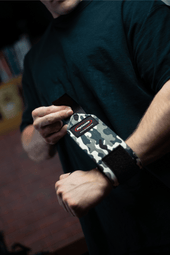
How To Wrap A Wrist For Carpal Tunnel
-

How To Wrap Wrist For Pain
-

What Are Wrist Wraps For
-

How Do You Use Weightlifting Straps
-

Why Is Mental Focus Important in Powerlifting? The Key to Peak Performance
-

Can Bodybuilding Help with Fat Loss? Discover Proven Benefits
-

Mastering the Basics: How to Improve Your Powerlifting Technique
-

Why Is Proper Form Crucial in Powerlifting? Tips for Safe and Effective Lifting
-

Can Powerlifting Increase Athletic Performance? Exploring Strength Gains and Sport Benefits
-

Top Tips on How to Avoid Common Injuries in Bodybuilding
-

Why Is Recovery Essential in Bodybuilding: Key Strategies and Benefits
-

Can Powerlifting Improve Overall Fitness? Explained
-

How Many Deadlifts Should I Do?
-

How Much Can a 17 Year Old Deadlift? Average Weights and Tips
-

Why Aren’t My Arms Growing as Fast as My Chest? Top Reasons Explained
-

How to Do Back Compression Deadlift: Best Tips for Pain-Free Lifting
-

Why Is My Bench Press Not Increasing
-

Unlock Your Potential: How to Get Stronger Gradually
-

Unlock Muscle Growth: Understanding What Is the 6-12-25 Rule
-

5 Lbs of Muscle in a Month? Let's Get Real
-
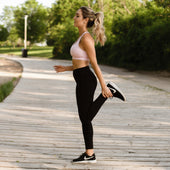
Get that celebrity booty in 10 easy to do work out routines
-

A.M. vs P.M. Workouts
-
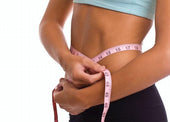
Fasting Do’s and Dont's
-
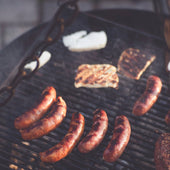
5 Surprising Sources of Protein
-
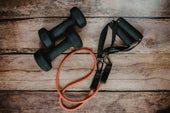
Home Workout Upgrade Must-haves
-

Top 5 Reasons You Aren’t Reaching Your Weightlifting Goals
-

Squats: A Must in Weightlifting and for Strength Training
-
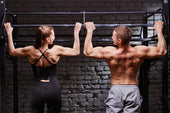
Weightlifting Routines for Men, Women and Beginners



